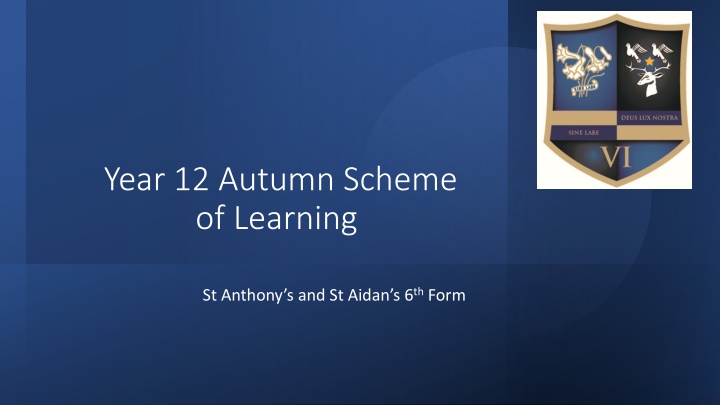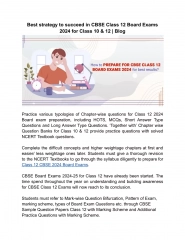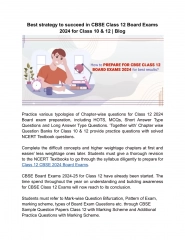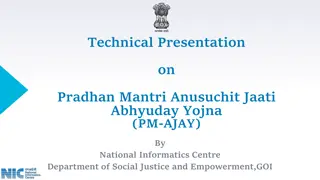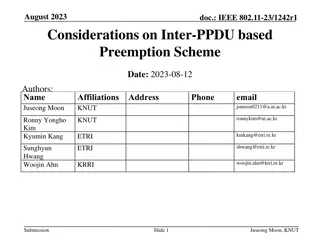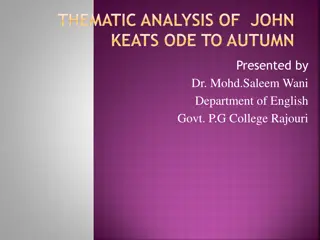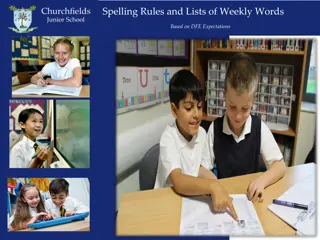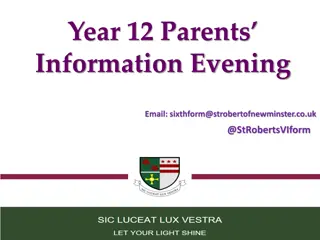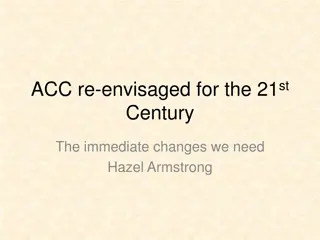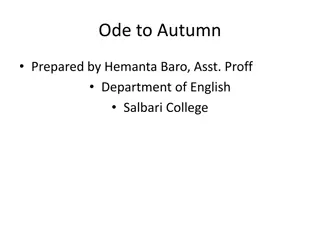Year 12 Autumn Scheme of Learning for St. Anthony's and St. Aidan's 6th Form
Explore the comprehensive Year 12 Autumn Scheme of Learning for St. Anthony's and St. Aidan's 6th Form, covering topics such as algebraic manipulation, quadratic equations, simultaneous equations, graphs, statistical sampling, differentiation, integration, and statistical hypothesis testing. Dive into learning objectives related to indices, surds, quadratic functions, linear and quadratic inequalities, polynomials, graph sketching, and transforming graphs. Develop a strong foundation in fundamental mathematical concepts to excel in your academic journey.
Download Presentation

Please find below an Image/Link to download the presentation.
The content on the website is provided AS IS for your information and personal use only. It may not be sold, licensed, or shared on other websites without obtaining consent from the author.If you encounter any issues during the download, it is possible that the publisher has removed the file from their server.
You are allowed to download the files provided on this website for personal or commercial use, subject to the condition that they are used lawfully. All files are the property of their respective owners.
The content on the website is provided AS IS for your information and personal use only. It may not be sold, licensed, or shared on other websites without obtaining consent from the author.
E N D
Presentation Transcript
Year 12 Autumn Scheme of Learning St Anthony s and St Aidan s 6thForm
Year 12 Autumn Term Teacher 1 Teacher 2 Week 1-3 Algebraic Manipulation, Quadratic Equations & Simultaneous Equations Proof Week 4 Graphs, Linear & Quadratic Inequalities Statistical Sampling Week 5 Straight Lines & Circles Statistical Sampling Week 6-7 Straight Lines & Circles Data Presentation & Interpretation Week 8 Binomial Expansions Data Presentation & Interpretation Week 9-12 Differentiation Probability & Statistical Distributions Week 13-15 Integration Statistical Hypothesis Testing
Year 12 Algebraic Manipulation, Quadratic Equations & Simultaneous Equations Learning Objectives Indices and Surds Understand and be able to use the lawsof indices for all rationalexponents. Be able to use and manipulate surds, including rationalising the denominator. Quadratic Functions Be able to manipulate polynomials algebraically. Be able to complete the square of the quadratic polynomial ax2 + bx + c. Be able to work with quadratic functions and their graphs, and the discriminant (D or D) of a quadratic function, including the conditions for real and repeated roots. Be able to solve quadratic equations including quadratic equations in a function of the unknown.
Year 12 Graphs, Linear & Quadratic Inequalities Learning Objectives Simultaneous Equations and Inequalities Be able to solve linear and quadratic inequalities in a single variable and interpret such inequalities graphically, including inequalities with brackets and fractions. Be able to express solutions through correct use of and and or , or through set notation. Be able to represent linear and quadratic inequalities such as y > x + 1 and y > ax2 + bx + c graphically. Be able to solve simultaneous equations in two variables by elimination and by substitution, including one linear and one quadratic equation. Be able to interpret the algebraic solution of equations graphically. Be able to use intersection points of graphs to solve equations. Polynomials Be able to manipulate polynomials algebraically.
Year 12 Graphs, Linear & Quadratic Inequalities Learning Objectives Sketching and Transforming Graphs Understand and be able to use graphs of functions. Be able to sketch curves defined by simple equations including polynomials. Be able to sketch curves defined by y = a/x and y = a/x (including their vertical and horizontal asymptotes) Be able to interpret the algebraic solution of equations graphically. Be able to use intersection points of graphs to solve equations. Understand and be able to use proportional relationships and their graphs Understand the effect of simple transformations on the graph of y = f (x) including sketching associated graphs, describing transformations and finding relevant equations: y = af (x), y = f(x) + a, y = f(x + a) and y = f(ax), for any real a
Year 12 Straight Lines & Circles Learning Objectives Coordinate Geometry Understand and be able to use the equation of a straight line, including the forms y = mx + c, y - y1 = m (x - x1) and ax + by + c = 0 Be able to use the gradient conditions for two straight lines to be parallel or perpendicular Be able to use straight line models in a variety of contexts Circles Understand and be able to use the coordinate geometry of a circle including using the equation of a circle in the form (x - a) 2 + (y - b) 2 = r2 Be able to complete the square to find the centre and radius of a circle Be able to use the circle properties in the context of problems in coordinate geometry
Year 12 Binomial Expansions and Differentiation Learning Objectives Understand and be able to use the binomial expansion for (?? + ?)?for positive integer n and n! and ???or ? ? Understand and know the link to binomial probabilities Binomial Expansion Differentiation Understand and be able to use the derivative of f (x) as the gradient of the tangent to the graph of y = f(x) at a general point (x, y) Understand and be able to use the gradient of the tangent at a point where x = a as the limit of the gradient of a chord as x tends to a Understand and be able to sketch the gradient function for a given curve. Understand and be able to find second derivatives.
Year 12 Differentiation Learning Objectives Differentiation cont. Understand and be able to use the second derivative as the rate of change of gradient. Be able to differentiate xn, for rational values of n, and related Be able to show differentiation from first principles for small positive integer powers of x Be able to apply differentiation to find the gradient at a point on a curve and the equations of tangents and normals to a curve Be able to apply differentiation to find and classify stationary points on a curve as either maxima or minima. Be able to identify where functions are increasing or decreasing. Understand and be able to use the gradient of the tangent at a point where x = a as: the limit of the gradient of a chord as x tends to a, a rate of change of y with respect to x
Year 12 Integration Learning Objectives Integration Know and be able to use the fundamental theorem of calculus Be able to integrate ??where n !-1 and related sums, differences and constant multiples Be able to evaluate definite integrals Be able to use a definite integral to find the area between the curve and the x-axis
Year 12 Proof Learning Objectives Proof Understand and be able to use the logical connectives Understand and be able to use the structure of mathematical proof, proceeding from given assumptions through a series of logical steps to a conclusion Be able to show disproof by counter example
Year 12 Statistical Sampling Learning Objectives Statistical Sampling Understand and be able to use the terms population and sample Be able to use samples to make informal inferences about the population Understand and be able to use sampling techniques, including simple random sampling and opportunity sampling Be able to select or critique sampling techniques in the context of solving a statistical problem, including understanding that different samples can lead to different conclusions about the population
Year 12 Data Presentation & Interpretation Learning Objectives Data Presentation & Interpretation Be able to interpret tables and diagrams for single- variable data. Understand that area in a histogram represents frequency Be able to interpret scatter diagrams and regression lines for bivariate data, including recognition of scatter diagrams which include distinct sections of the population Be able to understand informal interpretation of correlation Be able to understand that correlation does not imply causation Be able to calculate and interpret measures of central tendency and variation, including mean, median, mode, percentile, quartile, inter-quartile range, standard deviation and variance Be able to calculate mean and standard deviation from a list of data, from summary statistics or from a frequency distribution, using calculator statistical functions Recognise and be able to interpret possible outliers in data sets and statistical diagrams. Be able to select or critique data presentation techniques in the context of a statistical problem. Be able to clean data, including dealing with missing data, errors and outliers
Year 12 Probability & Statistical Distributions Learning Objectives Probability Understand and be able to use mutually exclusive and independent events when calculating probabilities Be able to use appropriate diagrams to assist in the calculation of probabilities Statistical Distributions Understand and be able to use simple, finite, discrete probability distributions, defined in the form of a table or a formula Understand and be able to use the binomial distribution as a model Be able to calculate probabilities using the binomial distribution, using appropriate calculator functions Know and be able to use the formulae = np and = npq Statistical Hypothesis Testing Understand and be able to use the language of statistical hypothesis testing, developed through a binomial model: null hypothesis, alternative hypothesis, significance level, test statistic, 1-tail test, 2-tail test, critical value, critical region, acceptance region, p-value Be able to conduct a statistical hypothesis test for the proportion in the binomial distribution and interpret the results in context
